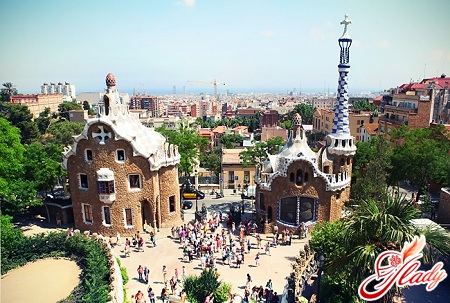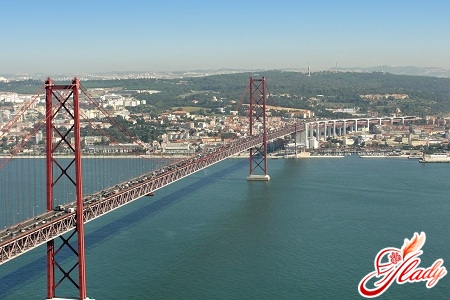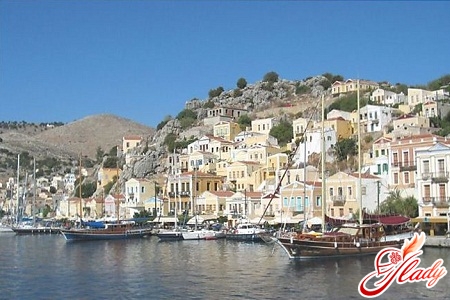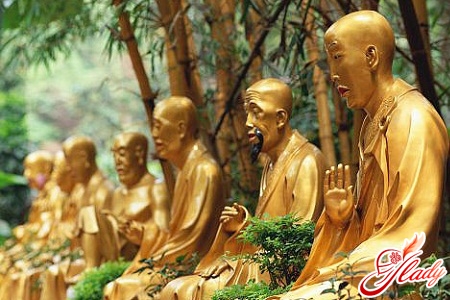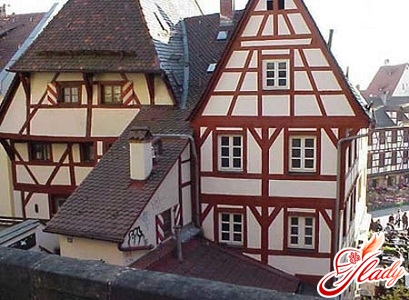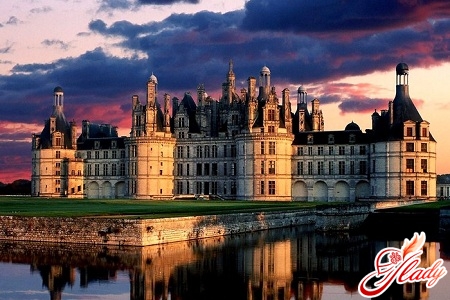 The Loire Valley is called by many names:the heart of France, the seat of its true spirit, its adornment and the cradle of glory. Without exaggeration, without coquetry, without allowing historical errors, each statement has factual evidence. After all, it was on the banks of this river, by no means the largest in France, that the history of the greatness of the French kingdom began. It was here, and not in Paris, as one might think, that the fate of the state was decided more than once. It is its banks that remember the footprints of representatives of all the royal dynasties of France. These picturesque places witnessed the bloody battles of the Maid of Orleans, the last years of Leonardo da Vinci's life, the great love of Henry II and Diane de Poitiers, the first woman to voice the canons of true beauty. Here the fabric of time becomes thinner and history ceases to be a set of dry dates and lists of significant events. It materializes, becomes tangible and accessible to understanding, one has only to see the castles of the Loire located along the entire length of the river. Reliable guards, silent witnesses of heroism, greatness, fall, self-sacrifice and betrayal. Each castle on the Loire has its own history, one way or another connected with women. Anne of Brittany, Joan of Arc, Catherine de Medici, Marguerite of Navarre and Anne of Austria… Familiar names, aren’t they? Who among us didn’t read Dumas’s novels as a child; but have you ever thought that you could see with your own eyes the parks where the heroes and heroines of the novels wandered, or spend the night in one of the nearby chateaux, where unimaginable intrigues were woven and the fates of entire states were decided? If you decide to take a trip into the past of great France, it’s better to do it yourself. Especially since the “Loire by Bike” cycling route runs along the Loire. 120 km of smooth roads designed for cyclists. It is impossible to get lost, despite the fact that the route runs through small forests. Signs with the name of the area where you are now are at every step. And spending the night under the roof of a small chateau, although not as grand and majestic as the first castle that you will encounter on the way to Blois, will give you the opportunity to feel like a real time traveler. So, with the charm inherent to French women, you can set off on a journey along the Boulevard des Kings!
The Loire Valley is called by many names:the heart of France, the seat of its true spirit, its adornment and the cradle of glory. Without exaggeration, without coquetry, without allowing historical errors, each statement has factual evidence. After all, it was on the banks of this river, by no means the largest in France, that the history of the greatness of the French kingdom began. It was here, and not in Paris, as one might think, that the fate of the state was decided more than once. It is its banks that remember the footprints of representatives of all the royal dynasties of France. These picturesque places witnessed the bloody battles of the Maid of Orleans, the last years of Leonardo da Vinci's life, the great love of Henry II and Diane de Poitiers, the first woman to voice the canons of true beauty. Here the fabric of time becomes thinner and history ceases to be a set of dry dates and lists of significant events. It materializes, becomes tangible and accessible to understanding, one has only to see the castles of the Loire located along the entire length of the river. Reliable guards, silent witnesses of heroism, greatness, fall, self-sacrifice and betrayal. Each castle on the Loire has its own history, one way or another connected with women. Anne of Brittany, Joan of Arc, Catherine de Medici, Marguerite of Navarre and Anne of Austria… Familiar names, aren’t they? Who among us didn’t read Dumas’s novels as a child; but have you ever thought that you could see with your own eyes the parks where the heroes and heroines of the novels wandered, or spend the night in one of the nearby chateaux, where unimaginable intrigues were woven and the fates of entire states were decided? If you decide to take a trip into the past of great France, it’s better to do it yourself. Especially since the “Loire by Bike” cycling route runs along the Loire. 120 km of smooth roads designed for cyclists. It is impossible to get lost, despite the fact that the route runs through small forests. Signs with the name of the area where you are now are at every step. And spending the night under the roof of a small chateau, although not as grand and majestic as the first castle that you will encounter on the way to Blois, will give you the opportunity to feel like a real time traveler. So, with the charm inherent to French women, you can set off on a journey along the Boulevard des Kings!
Jeanne, Anna and Catherine
It was not for nothing that we mentioned that women played ina huge role in the history of France. And in the castle of the reformer king Louis XII and in the famous Blois Cathedral you will find proof of this. Here the Maid of Orleans, Joan of Arc, received a blessing, going into battle against the English. Here they also held the funeral service for Catherine de Medici - the greatest intriguer who started the St. Bartholomew's Day massacre, only to get rid of Henry of Navarre, the husband of her own daughter. The Blois castle itself is the residence of the great Anne of Brittany, who not only managed to become the wife of two kings at once, Charles and Louis, but was also known as a shrewd politician and the richest woman in Europe. Not bad for the 15th century, right? By the way, it is thanks to Anne that girls wear a white dress on their wedding day. The Queen of France was the first to dare to dress in the mourning colors of that time. But let's get to know the Chateau de Blois itself. To paraphrase the King of Navarre, Blois is worth a Mass. It is not for nothing that this castle was chosen as a residence by two reformist kings, Francis I and Louis XII. The Château de Blois was initially built as a fortress capable of protecting the entire city and holding back the enemy in case of a siege, and was completed as a country estate. Over the course of four centuries, new parts were added to it. Such great masters as Benvenuto Cellini and Andreo dal Sarto contributed to the construction of Blois. The castle, whose walls were touched by the hands of geniuses, amazes the imagination. Huge fireplaces, carved beams and balustrades, secret rooms, cornices entwined with carved grape vines. Wandering through the corridors of this castle, you can study the architecture of France during the Renaissance. Or perhaps you will meet the ghost of Catherine de Medici or Henry of Guise, who was murdered here, in the poison cabinet. But if you decide to continue exploring the Loire castles on your own, then it's time to hit the road to Chambord Castle.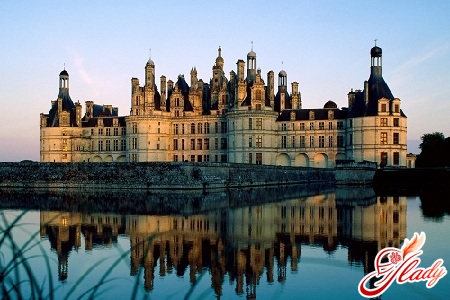
And the kings hunt hunting
Oh, these kings, what won't they do?invented to deceive their wives and at the same time observe etiquette! Chambord Castle owes its appearance to the lovelorn Francis I. In order to be closer to his beloved, Countess of Toury, he ordered the construction of Chambord to begin in the early 16th century. But Francis, like all kings, was not used to trifles, and instead of a hunting lodge, he built a beautiful castle, which is still considered the pearl of the Renaissance. And it turned out to be a pretty big pearl! At one time, Marguerite of Navarre, while in the castle, complained that wandering through the corridors and stairs of the castle took up a lot of her time every day. And a couple of times she even got lost in the intricacy of the rooms. In the park of this hunting lodge, you can fit half of Paris. It is here that you can clearly feel that kings do everything on a grand scale. How Francis' love story ended, we do not know. But he justified himself before his descendants, giving the world a masterpiece of castle architecture. Even after centuries, looking at the Loire Valley from the height of the castle terrace, there is a desire to immediately write a couple of poems as a tribute to the beauty and grandeur.
Age - not an obstacle, the main thing to be a blonde
I would like to warn once again those who have gatheredTake an independent tour of the Loire Valley castles: Stay away from organized tours. They will not let you enjoy the beauty that appears before you. In any of the castles, you can pay the caretaker for an individual tour, and instead of memorized texts, you will receive a real story, during which history will come to life for you. You can create a schedule for such a trip in accordance with your own biorhythms. But these are not all the advantages. Around the large and tourist-visited castles, there are many inconspicuous small chateaux with an equally rich history. On the road from Chambord to Chenonceau, there is an inconspicuous, at first glance, castle - Chateau de Frileuse. But this is only at first glance. A real woman simply must visit here! After all, the owner of this castle is a real perfumer. His ancestors composed fragrances for courtiers. For a relatively small amount, you can afford to bring home a fragrance that was once used by Queen Margot or Diane de Poitiers. By the way, Diane de Poitiers, the favorite of Henry II, was the first owner of the Château des Dames de Chenonceau. Henry was crazy about the witty, beautiful blonde, despite the fact that she was 19 years older than him. So his wife, Catherine de Medici, had to grit her teeth, endure the "aged" impudence and, proudly straightening her shoulders, go to the castle pond with her rival to feed the black swans. After this, it becomes clear why Catherine became a poisoner. But she would not have been a Medici if, after Henry's death, she had not taken it out on Diane and taken the castle from her. And Diane de Poitiers sank into obscurity. Apparently, in an attempt to get rid of all traces of her rival, Catherine began to rebuild it. Thanks to her efforts, the Château de Chenonceau became the largest castle in France, built in the Renaissance style. Another peculiarity of this castle is that it has always belonged to women. No man is listed in the documents as the owner. And one more interesting detail. No matter how much time has passed, how many mind-boggling intrigues have intertwined under the roof of the castle, how many love tragedies have played out in its secret corners, but none of them ended in murder. So, if you do not like bloody stories, stay in Chenonceau.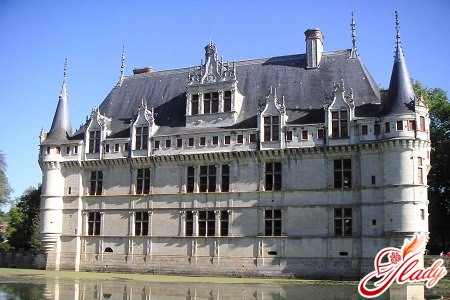
Kings and cabbage
At first glance, this is quite strangelogical sequence: castles – Loire – kings – cabbage. But only at first glance. As soon as you enter the Chateau de Villandry, every word is filled with meaning and… beauty. But it’s better to start from the very beginning. With the fact that Villandry is the last castle built in the Renaissance style. It seems that there is nothing special about it. Yes, it is a beautiful castle. But after the beauty of Chensonneau and Blois, it will be difficult to surprise you. Enter the castle and… you are speechless. The interiors of the castle, the pilasters, the Arabic ceiling, consisting of more than three thousand parts. But that’s not all, a real miracle awaits you ahead – the three-level gardens of Villandry. The first is a mirror pond, fountains, old lemon trees, trimmed boxwood bushes. This is where you understand all the beauty of nature! Even if it is brought to perfection by human genius. In a water garden, it does not hurt the eye, does not cause rejection. You can walk along the linden alleys or get lost in the green labyrinth. The garden of love, the garden of medicinal plants, the garden of passion. Do you think these are just names? Nothing of the sort. You can go from garden to garden and admire the beautiful, almost mathematically verified flowerbeds and bushes trimmed to a single pattern. In each of these gardens, you understand how poor your language is, how insignificant words are. They pale in comparison to this beauty. Bright colors, correct forms and... mood. It accompanies you all the time while you are in the Villandry gardens. This is where you can feel like a queen. No, why bother with trifles? The goddess Flora! Well, here we have reached the royal cabbage. Can you imagine that a vegetable garden, something associated in our minds with a summer cottage of six hundred square meters, can be brought to the level of park art? Well, on the lower level of the Villandry gardens you will be able to see it with your own eyes. And to understand that one can describe an eggplant bush using such epithets as beautiful or inspiring. It is hard to call this incredible vegetable mosaic a vegetable garden. Having settled down in one of the garden gazebos, one wants to stay there forever. True, there is a risk of dying of hunger, because one would not dare to encroach on such beauty for the sake of banal satiety.
Castle of the sleeping beauty
One look at the castle of Ussé inspired the greatstoryteller Charles Perrault to write the story of Sleeping Beauty. Refined, like all buildings in the Gothic style. If you look at the castle from afar, you can easily feel like the heroine of a fairy tale. To complete the picture, the only thing missing is banners fluttering over the pointed roofs of the castle of Ussé. And heralds with copper trumpets, inviting everyone to look at the beautiful royal child. But this can be fixed. As soon as you get into the castle itself, a real fairy tale will open up before you. Especially for lovers of fairy tales, the castle has an exhibition of wax figures made based on Perrault's fairy tale. A collection of Flemish tapestries and weapons will complement the experience. By the way, another interesting feature of this castle is that in the entire history of its existence, not a single king has ever stayed there, despite the fact that chambers for the august person were always prepared. What happened there, and why no king dared to step into the fairy tale, is now quite difficult to say. But it is worth visiting the Sleeping Beauty Castle. Especially since the name of one of its owners will seem vaguely familiar to you - D'Epinay. And for a long time you will be tormented by vague memories from the books you read in childhood, until the name of the Count of Monte Cristo emerges. They say that once you visit France, you will remember it with longing for a whole year. Once you visit Paris, you will understand that you were born in the wrong city. And once you visit the castles of the Loire, you will feel how easy it is to take a step from the present to the past. And you will return here at every opportunity. Fortunately, three hundred castles that are located in the valley of the famous river are more than enough for not one, but a dozen exciting trips. We recommend reading:




